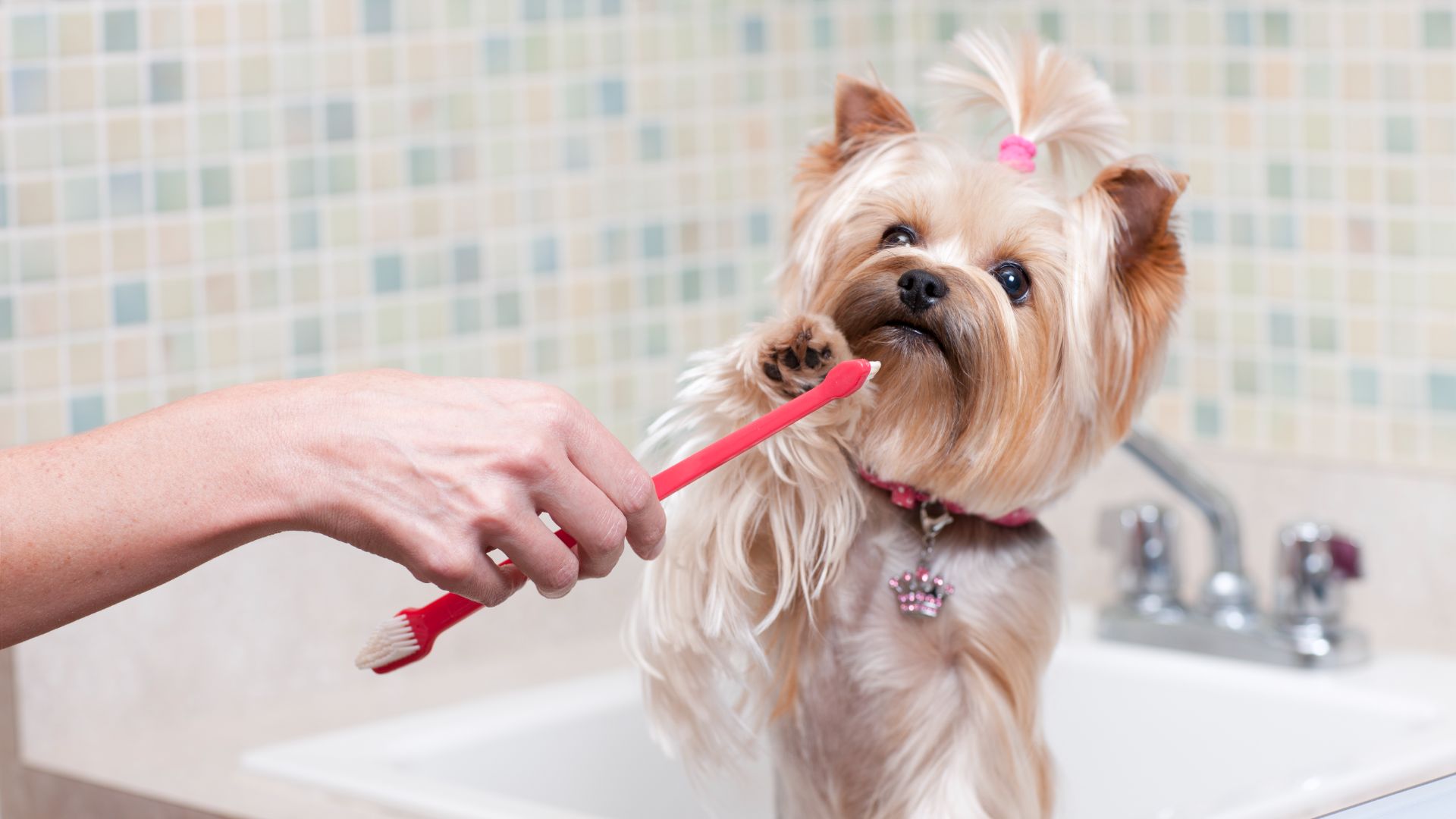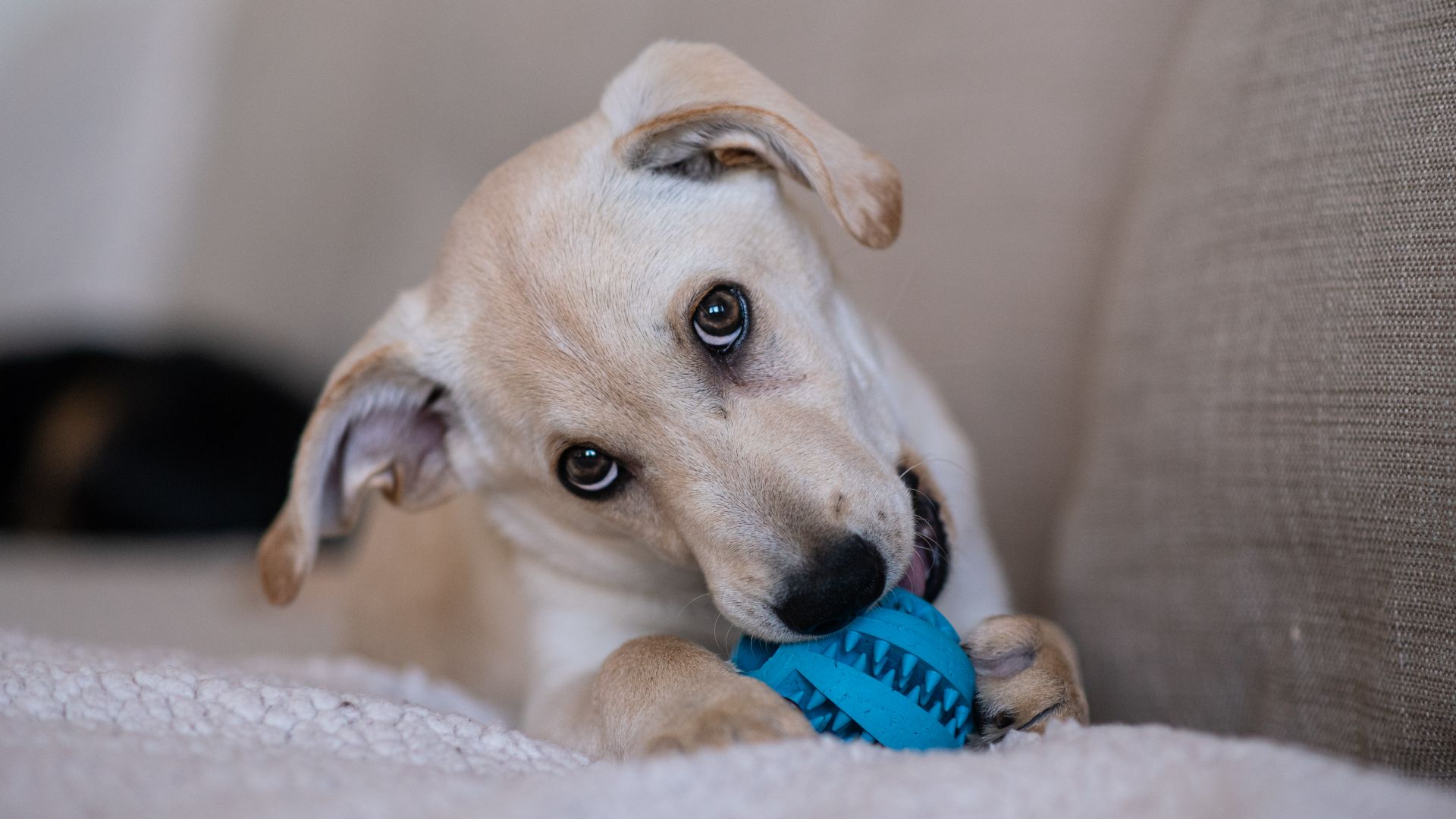
Ever wondered how to clean a dog’s teeth without brushing? Although many owners understand that daily brushing is the best option for dental health, it’s only natural to ponder the alternatives.
A number of products, such as the best dental chews for dogs, claim to be effective in promoting canine oral health, but while these are good for maintenance you might be looking for something else to support this.
Home dental care isn’t a purely cosmetic issue. A lack of dental care can result in serious consequences for your dog’s health, such as infections and even fractures of the jaw bone.
Dental infections can also spread through the blood to other areas of the body, such as the heart, kidneys, and liver. Vet-provided dental cleanings are one component of dental health, but home dental care also plays a key role in preventing serious gum and dental disease in dogs .
Do you need to brush your dog’s teeth?
Daily brushing is the best way to care for your dog’s teeth – we suggest using one of the best toothbrushes for dogs along with one of the best dog toothpastes. However, this is not realistic for every dog or owner. So don’t panic – if you can’t brush your dog’s teeth, there are other options for at-home dental care.
Be aware, however, that non-brushing alternatives are typically less effective than brushing. Therefore, your home care may need to be supplemented with more frequent veterinary dental cleanings, which are performed under general anesthesia. (For more information on the costs associated with veterinary dentistry, see how much does dog teeth cleaning cost.)
Most dogs need a veterinary dental cleaning every one to two years. However, dogs that do not receive regular brushing at home, especially small breed dogs, may need their teeth cleaned as often as every six months.
Brushing dog teeth: how often should you do it?
If you’re wondering how often should I brush my dog’s teeth, vets recommend that brushing once daily is essential, in order to remove plaque before it hardens into tartar.
Plaque (the fuzzy film you may occasionally notice on your teeth when you wake up in the morning) is a collection of bacteria and food particles. Unlike tartar, plaque can easily be removed with a toothbrush. Once plaque remains in your dog’s mouth for 24-48 hours, however, it hardens into tartar. And unfortunately tartar is nearly impossible to remove with brushing or other home care measures.
Many dogs tolerate daily brushing well, especially if it’s introduced at an early age. Be sure to use a toothpaste specifically designed for dogs, because dog toothpaste is fluoride-free and formulated to be tasty for dogs. Follow our directions on how to brush a dog’s teeth and talk to your vet for further guidance.
If you’ve invested the time and effort to introduce brushing and your dog still won’t tolerate it, you may need to find an alternative method of home dental care.
How to clean a dog’s teeth without brushing
There are a variety of non-brushing options for home dental care.
Oral hygiene rinses function similarly to mouthwash in humans. The rinse is applied to your dog’s mouth once daily, with the goal of coating the teeth. Oral hygiene rinses have antibacterial properties that help reduce plaque and tartar formation.
Dental treats mechanically scrape plaque and tartar from the surface of the teeth. Some dental treats also contain an enzymatic cleaner to further reduce plaque and tartar. Follow label recommendations when giving your dog any dental chew, as this is how they are tested and how they are deemed to be most effective. Feeding excessive dental chews or treats can contribute to obesity, so this is probably not a good option for overweight dogs.
Finally, water additives can be a low-maintenance way to improve your dog’s oral health. They can be added to your pet’s drinking water to reduce plaque and oral bacteria in both dogs and cats.
Water additives are unlikely to be as effective as brushing, oral hygiene rinses, or even dental chews, but they’re an easy option that’s better than doing nothing.

What foods clean dogs teeth?
When exploring how to clean a dog’s teeth without brushing, the food in their bowl can make a difference.
There are a number of dental diets designed to keep dog teeth clean and healthy. These diets scrape the edges of your dog’s teeth during chewing, instead of crumbling into powder with the first bit of pressure from your dog’s teeth.
While a number of diets that claim to promote dental health, many vets recommend Hills Dental Care or Royal Canin Veterinary Dental Diet. These diets are available only with a veterinary prescription (but you can purchase via Chewy), and are specially designed and tested to ensure that they promote dental health.
Can you clean dog’s teeth naturally?
The best ways to clean your dog’s teeth naturally are through the use of daily brushing and dental chews. Additionally, frequently engaging in play with rope toys and other toys may help remove some plaque and slow the formation of tartar. Here’s our guide to the best dog chew toys.
While some websites tout coconut oil as an effective natural toothpaste for dogs, there is no evidence to support this claim. Coconut oil can cause gastrointestinal issues and even allergic reactions in some dogs – caution is advised.
Can I clean my dog’s teeth with baking soda?
While baking soda is great for non-toxic cleaning around the home, vet Dr Rebecca MacMillan does not recommend using it to clean canine teeth.
“Dogs are unlikely to enjoy the taste, and it could put them off from brushing their teeth,” she says. “More importantly, swallowing large amounts of baking soda could also lead to tummy troubles.
“It would be much better to invest in some pet toothpaste, which are often meat-flavoured and will help pets to be more compliant with the process.”
Signs your dog needs a dental vet check
According to Dr MacMillan, bad breath and red, inflamed gums are the first signs your dog might need a dental check-up.
“Seeing brown or grey calcified material instead of a nice shiny white tooth surface can be another clear indication that your pet needs attention,” she continues. “This calculus, or tartar, is not just unsightly but it also harbors bacteria, contributing to gum inflammation and recession”
Pup parents should also keep an eye on the soundness of their dog’s teeth.
“Loose, wobbly, or missing teeth are also a clear problem and shouldn’t be ignored,” says Dr MacMillan. “If your dog is drooling or rubbing their face more than usual, this could be a sign of dental discomfort. ”
Dr MacMillan warns dog owners not to wait for their pup to go off their food before seeking the advice of a vet.
“In my experience, most pet owners don’t realize that their dog will often still eat even if their teeth are in really quite a bad state,” she adds. “Reduced appetite is not a reliable indicator of poor oral health, but certainly, some dogs with advanced disease or a tooth root abscess may start to go off their food.”
Found this feature useful? You might find it useful to read up on healthy dog gums







